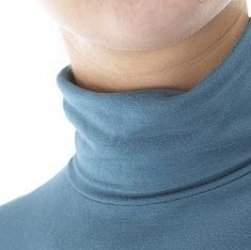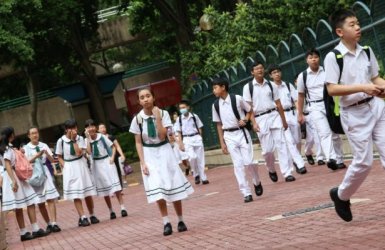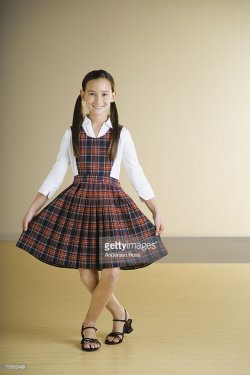Abishai100
VIP Member
- Sep 22, 2013
- 4,959
- 250
- 85
A school uniform is a specially-designed and administratively designated regular outfit required to be worn by all students attending the given school governed by the policy distributing the uniforms.
Many schools in Asia and Eastern Europe still require their students to wear regular school uniforms, but their popularity has diminished in public schools across America.
Advocates of school uniforms argue that the standardization of student dress takes away the peer pressures of fashion and takes away the distraction of personalized libertine school-wear and clothing, motivating the students to solely focus on their education.
Critics of school uniforms suggest that the strict standardization that comes with uniform-wear tends to frustrate students who would rather choose their own variegated school-wear and clothing.
For our modern age of consumerism convenience culture (i.e., eBay, eTrade, Burger King, etc.), uniformity and diligence tend to be ignored in preference for personalized comforts and laissez-faire living.
One thing is for sure --- the discussion surrounding school uniform enforcement encourages dialogue about the value of education administration.
Compromises that meet the demands of both critics and advocates of school uniforms include the distribution of regular uniforms that are more colorful (i.e., lime green uniforms as opposed to grey uniforms).

School uniform - Wikipedia the free encyclopedia


Many schools in Asia and Eastern Europe still require their students to wear regular school uniforms, but their popularity has diminished in public schools across America.
Advocates of school uniforms argue that the standardization of student dress takes away the peer pressures of fashion and takes away the distraction of personalized libertine school-wear and clothing, motivating the students to solely focus on their education.
Critics of school uniforms suggest that the strict standardization that comes with uniform-wear tends to frustrate students who would rather choose their own variegated school-wear and clothing.
For our modern age of consumerism convenience culture (i.e., eBay, eTrade, Burger King, etc.), uniformity and diligence tend to be ignored in preference for personalized comforts and laissez-faire living.
One thing is for sure --- the discussion surrounding school uniform enforcement encourages dialogue about the value of education administration.
Compromises that meet the demands of both critics and advocates of school uniforms include the distribution of regular uniforms that are more colorful (i.e., lime green uniforms as opposed to grey uniforms).

School uniform - Wikipedia the free encyclopedia







